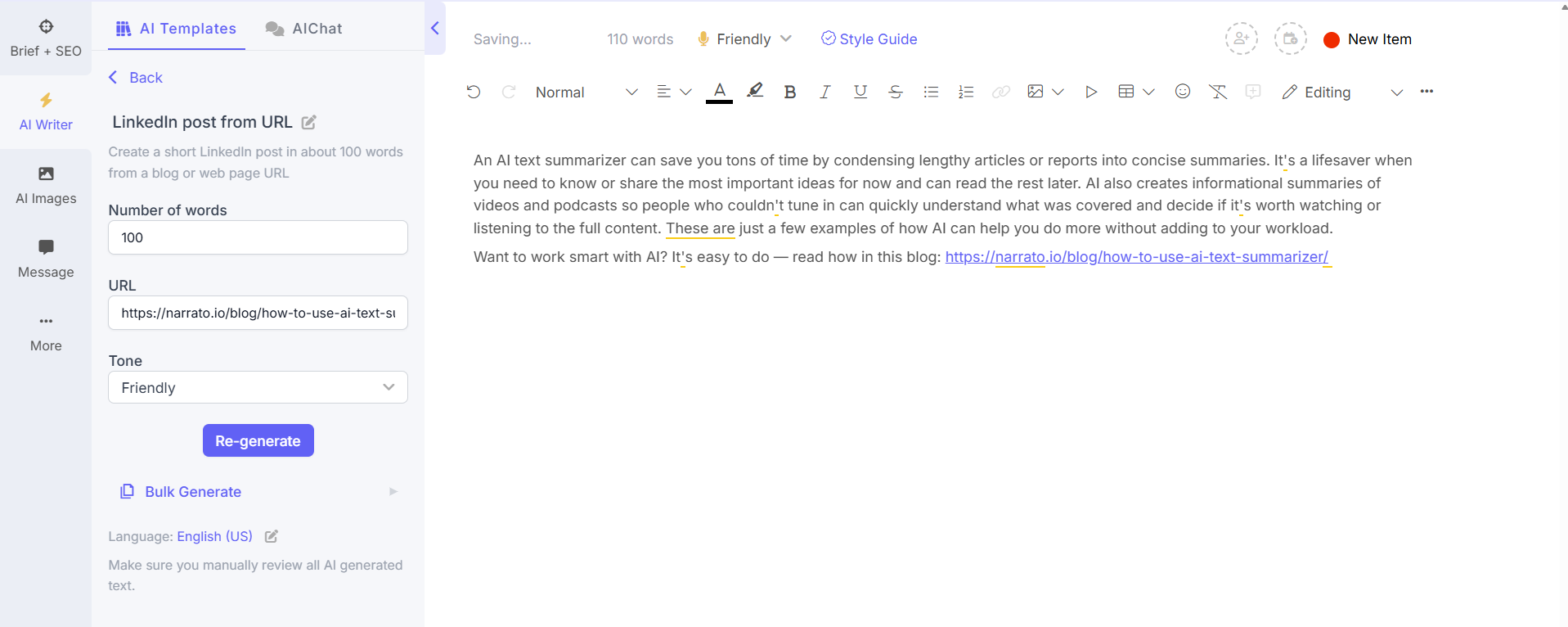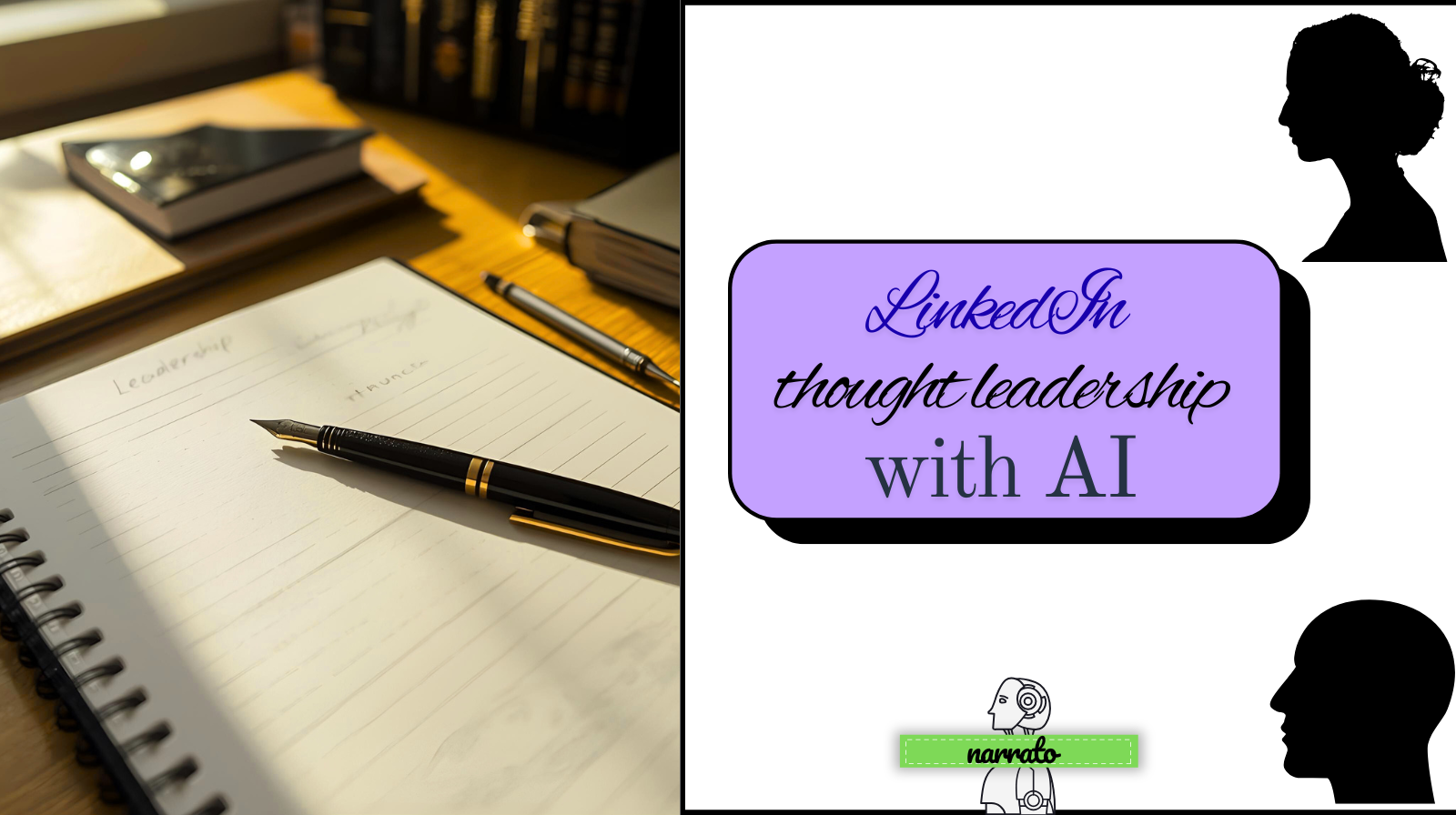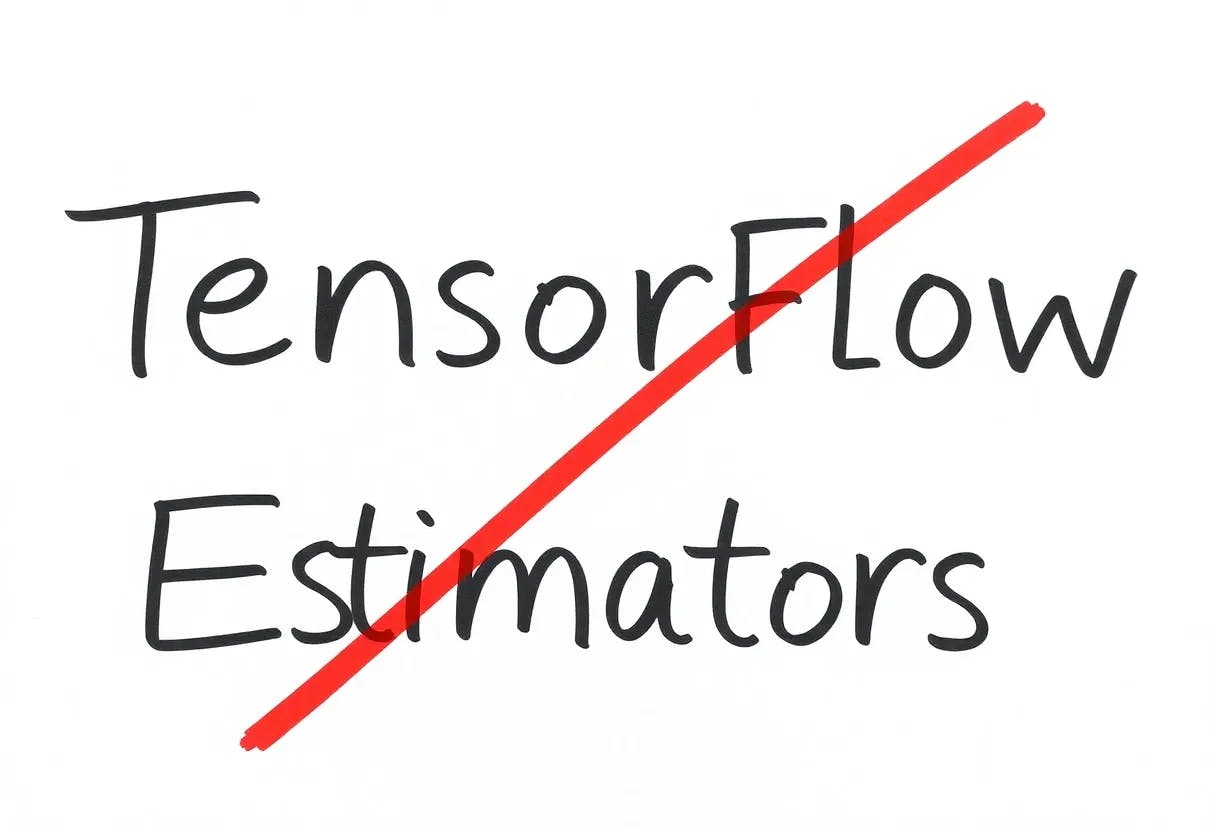LinkedIn is a place where people go to keep up with the chatter in their industry. As a marketer, I’m currently most curious about AEO and GEO, and every now and then, like to read what leading SEO voices on LinkedIn have to say. Doesn’t matter if the posts by people who know their stuff (by dint of being top-level executives or successful advisors/entrepreneurs) or who back their opinions with strong data, have been written with help from an AI LinkedIn content generator (or someone from the marketing team). So long as they contain kernels of truth and wisdom, I’ll keep going back for more.
And if I were a business looking for a product or service, I’d imagine being interested in getting to know the people behind it, like the CEO, CMO, or CIO. If they’re seasoned professionals with impressive backgrounds, I’d probably take them seriously from the start, and if they’re new founders saying interesting stuff, I’d be curious to explore more. In the former case, I’d trust the storyteller quite easily and in the latter, pay closer attention to what they share as they post more. At this point, both ‘categories’ of storytellers would’ve done their job of influencing me and making me notice their product.
I guess that’s a convoluted way of saying, if your words have weight and value, you’re a thought leader to your LinkedIn audience. When what you’ve said before and delivered have earned you trust, it’ll carry across every channel where you share content. And if you’re just starting out, your insights, not recycled takes, will bring trust over time. The use of AI to create your posts won’t make you less of a thought leader.
The meeting of thought leadership and AI
How to use AI content generator for thought leadership content

The meeting of thought leadership and AI
Per Wikipedia, a thought leader is a person who specializes “in a given area and whom others in a given industry turn to for guidance. As the term implies, a thought leader leads others in the thinking around a given topic.” Thought leadership resides in many places — blogs, webinars, events, roundtables, conference rooms, private cabins, and very visibly — on LinkedIn.
For content to qualify as thought leadership, it must offer:
- Clear expertise (e.g. “In my 10 years managing enterprise sales…”, not only talks about the “whats” but also the “whys”)
- Helpful insights based on experience (e.g. shares examples and details that only come from doing the work)
- Practical knowledge (e.g. sharing tools, processes, or strategies you actually use)
Thought leadership doesn’t require:
- Creative writing skills
- Fancy prose
- Complex storytelling
- Literary flourishes
An AI LinkedIn content generator creates LinkedIn posts from your instructions (prompts) and inputs. You can use it for different use cases, from generating short posts/captions and longer posts from existing content (repurposing) to brainstorming content ideas, improving content by multilingual professionals and making fast grammar and stylistic edits. It’s immensely useful for creating thought leadership content when sales enablement, brand awareness, or another goal depends on subject matter experts or C-suite executives actively engaging with the LinkedIn community.
How to use AI LinkedIn content generator for thought leadership content
Create a post for a blog, gated resource, or company announcement
Standard promotional posts for blogs, resources, and announcements can be handed over to AI. This isn’t thought leadership content but an example how you can use AI to create template-driven LinkedIn content quickly. The LinkedIn post below was created using Narrato. Our AI writing assistant used the blog URL provided to analyze the blog’s contents and created an engaging caption promoting the blog. We used a friendly tone here but you can train the AI in your brand or CMO/CEO voice too.


If you’re promoting the post from your CMO’s handle, AI can frame the post as a personal perspective, like this:
I don’t always have time to read every report or watch every webinar in full. Our AI text summarizer has helped me keep on top of things I’d otherwise miss. It gives me the key points in minutes, and I can dig deeper only if I need to. Another big help is that it also works for videos and podcasts, so whether it’s my team or our customers, everyone can quickly see what’s most important before deciding if it’s worth the full read or watch.
Repurpose your leadership content for LinkedIn
AI can repurpose content from one format into another: blogs to social posts, podcasts to blogs, customer conversations into FAQs, and discussions with subject matter experts into Q&A articles. The essence remains untouched; it just gets transferred from one medium/form to another. So, when it’s time to repurpose content created by an executive into a LinkedIn post, AI can be their proxy. How the post turns out will depend on the quality of the LinkedIn post generator and the level of brand personalization it offers. For example, Typeface’s AI can be trained in a voice that sounds natural and the executive can review and make changes if they feels that’s necessary.
This mirrors how leadership content is usually created. The executive supplies the perspective, marketing or PR shapes it into their voice, and the executive or a senior marketer gives it a final review. From there, the same content can be repurposed into multiple formats. AI can accelerate this workflow by turning curated leadership material — or even rough notes from your executive — into polished pieces, making it easier to package a point of view quickly for public consumption.
Get ideas for leadership topics
One of the top uses of AI is generating ideas and topics. LLMs draw on what they’ve learned during training to suggest angles worth exploring, like common myths in your industry, questions people avoid answering, or counter-narratives that haven’t yet been covered by thought leaders and bloggers. Using simple prompts for thought leadership topics, you can uncover fresh ideas that stand out and avoid adding to the same recycled conversations on LinkedIn.
To improve content by a foreign language speaker
AI is a great tool for authors who express themselves better in their native language but want to communicate to a broader community in the global lingua franca. With a few LinkedIn prompts, they can edit their text for grammar, word choice, punctuation, and other technical aspects of the language. For example, “Is this sentence grammatically correct?”, “Are there any punctuation mistakes in this paragraph?”, or “Translate this text to English in a friendly and direct voice. Make it simple to understand while sounding like a native speaker.” Here are some more examples:
41 AI Prompts for Non-Native English Writers
3 Simple Ways to Improve Your Writing with ChatGPT as a Non-Native English Speaker
The alternative to refining text written in English is to use an AI LinkedIn content generator or translator to repurpose content from your strongest language to English or another language. Narrato and enterprise AI marketing platforms like Typeface translate text into multiple languages.
Sample text in Spanish (source: https://hipertextual.com/startups/patents-for-innovation-innovacion-problema-patentes/)
Es un problema en un contexto en el que se está buscando la independencia tecnológica nacional y Europea. Es un proceso que lleva años siendo debatido a instancias del conjunto de los países miembro. ¿Cómo garantizar una economía europea fuerte si, a fin de cuentas, los puntos clave en innovación y tecnología son de origen estadounidense? En materia de ciberseguridad es algo que ya comentaban desde Tehtris, startup francesa del sector, a Hipertextual. En una guerra tecnológica, no podemos pasar de lado si todas nuestras infraestructuras están controladas por terceros.
Translated text by Narrato
This is an issue in a context where national and European technological independence is being sought. It is a process that has been debated for years at the behest of all the member countries. How can a strong European economy be guaranteed if, at the end of the day, the key points in innovation and technology are of American origin? In the field of cybersecurity, this is something that Tehtris, a French startup in the sector, has already mentioned to Hipertextual. In a technological war, we cannot ignore the fact that all our infrastructures are controlled by third parties.
LinkedIn post generated from source URL
Innovation vs. Patents: A Modern Dilemma
In the startup world, innovation is key, but patents can sometimes be a hurdle rather than a help. An intriguing discussion from Hipertextual explores how patents, meant to protect innovation, might actually stifle it, especially for new businesses trying to make their mark.
Startups often face the challenge of navigating complex patent landscapes that can limit creative freedom. Is it time for a change in how we view intellectual property to better foster creativity and growth?
Let’s spark a conversation: How do you think startups can innovate more freely in the current patent framework? Share your thoughts below!
https://hipertextual.com/startups/patents-for-innovation-innovacion-problema-patentes
#Innovation #Startups #PatentDebate #Creativity #Entrepreneurship
Edit and enhance your LinkedIn thought leadership pieces
When time is tight and marketing is counting on you to share your expertise on LinkedIn, AI can polish drafts and help you create more compelling posts quickly. After writing your initial content, use AI to strengthen weak sections. For example, prompt it with: “This paragraph feels flat. How can I make it more engaging?” Review the suggestions and apply what works.
AI can also handle quick cleanup, fixing sentence flow, grammar, punctuation, and consistency issues. You can publish on schedule with less effort while keeping your authentic voice.
Give AI LinkedIn content generator a try
If you want every word you write to be your own, AI clearly isn’t an option you’d consider. But if you’re supporting a mandate requiring frequent thought leadership posts under your LinkedIn handle, AI can be invaluable — whether you use it directly or have someone from marketing help create content for you. You’re the primary content source, providing your insights, while AI can structure and package it in your brand voice.
While sharing expert content is generous, engaging in conversations builds relationships and cultivates communities. Use both approaches to share, seek, and inspire.
See how our AI LinkedIn post generator can help your LinkedIn marketing efforts with a free trial.












